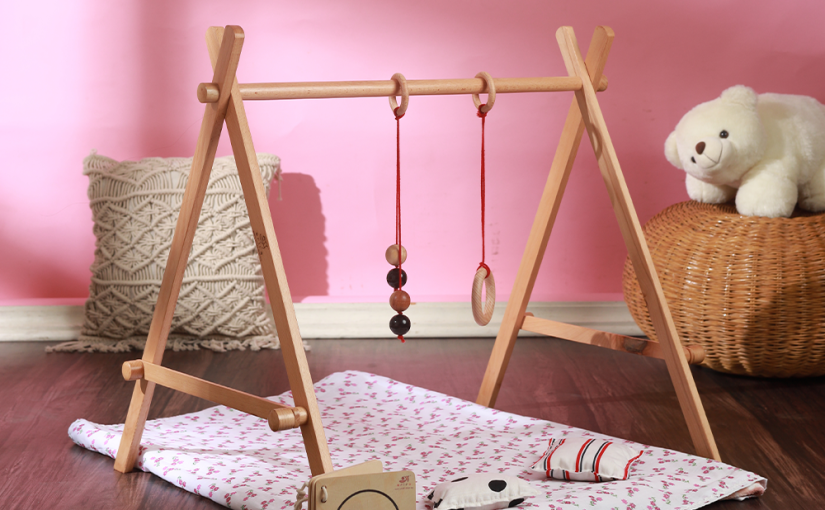The Resurgence of Wooden Baby Toys
In recent times, wooden baby toys have made a significant comeback. Parents and caregivers are seeking out these classic, nostalgic playthings for their little ones. But the reasons for this resurgence go deeper than mere sentiment. There’s a growing recognition that wooden baby toys offer unique benefits unmatchable by their plastic counterparts.
Made from natural materials, wooden baby toys boast durability and longevity. They are often handcrafted with exquisite detail, encouraging a more personal connection between child and toy. Moreover, being biodegradable, wooden toys stand out as a sustainable choice in a world increasingly concerned with environmental impact.
The simplicity of wooden baby toys is another factor driving their popularity. Without the overwhelming lights and sounds common in modern plastic toys, wooden toys provide a calm and focused play experience. They spark creativity and imagination in children, as they delve into open-ended play. These foundational experiences foster early developmental skills that benefit children for life.
Parents are also turning to wooden baby toys for safety reasons. They lack the chemicals and toxins sometimes found in plastics, which can be harmful over time. As awareness of these health concerns has risen, wooden toys have emerged as a safer alternative for conscious parents.
In a fast-paced digital world, wooden baby toys offer a return to simplicity and sustainability. This revival serves as a testament to the timeless appeal and irreplaceable qualities of wooden toys. As more families join this trend, we can expect to see wooden baby toys continue to thrive and enchant new generations of children.
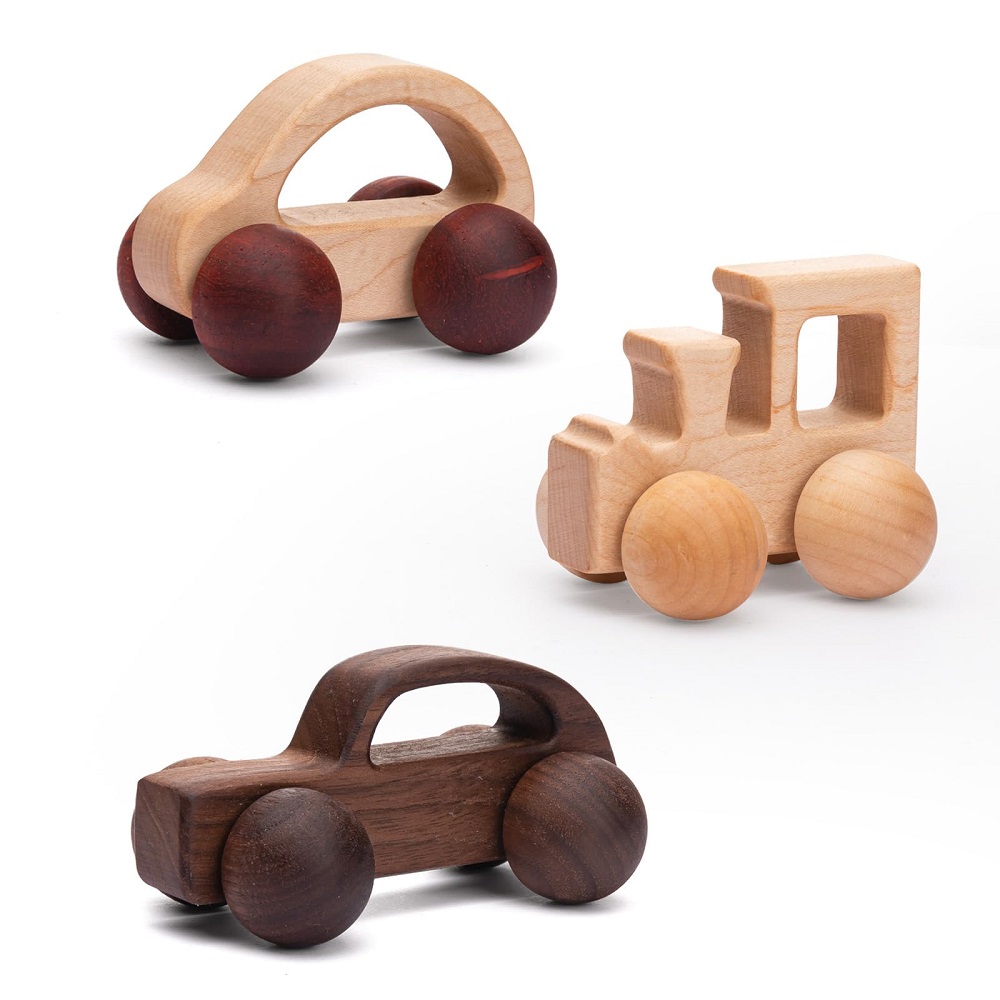
Safety First: Why Wooden Toys Are a Healthy Choice
Parents prioritize safety when choosing toys for their children. Wooden baby toys stand as a prime example of a safe option. They lack the harmful chemicals that many plastic toys contain. Wooden toys are often free from BPA, phthalates, and lead. These are substances known to pose health risks to young children.
Natural and Non-Toxic
Wooden toys are natural and non-toxic. They often come with finishes that are water-based or food-grade, posing little risk if mouthed by babies. As parents grow more health-conscious, the demand for safe, chemical-free toys rises.
Durability and Longevity Minimize Safety Risks
Beyond chemical safety, wooden toys are physically robust. Their durability prevents them from breaking into small, sharp pieces. This reduces the choking hazards common with more fragile toys. Solid construction means they last longer, making them safer over time.
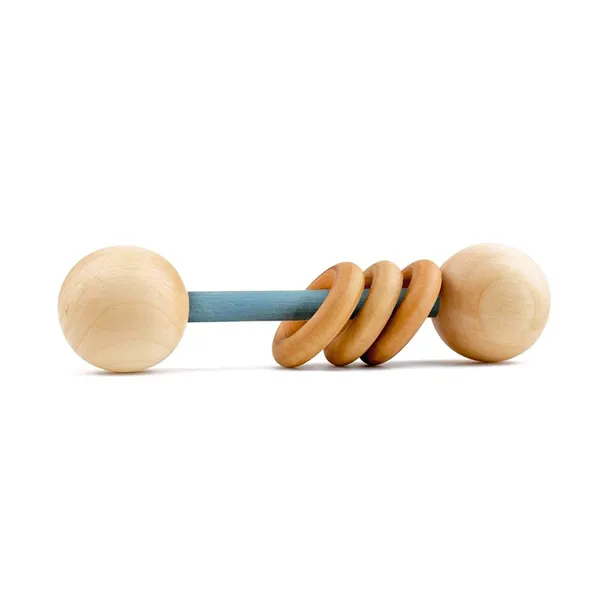
Choosing the Right Wooden Toys
Not all wooden toys are equal. Parents should seek out those with a reliable safety record. Look for toys that have passed safety standards and inspections. Trustworthy brands will often advertise their compliance with safety regulations.
The safety advantages of wooden baby toys make them a wise choice for conscientious parents. Those who pick these toys help ensure a safer playtime for their little ones.
Environmental Impact of Wooden Baby Toys
Choosing wooden baby toys is not just about safety or educational benefits. It’s also about recognizing the importance of environmental sustainability. These toys have a positive impact on the planet, and here’s how.
They’re Biodegradable and Eco-Friendly
Wooden baby toys are eco-friendly. They break down over time without harming the environment. Since they’re made from natural materials, they don’t linger in landfills like plastic toys do. Returning to the earth, they complete a natural cycle.
Fewer Chemicals Mean Less Pollution
In their production, wooden baby toys require fewer chemicals. This results in less pollution compared to the making of plastic toys. The fewer chemicals used, the better it is for our planet.
Support for Sustainable Forestry Practices
When we choose wooden toys, we often support sustainable forestry. Many wooden toy brands source their materials from forests that are responsibly managed. This means that the impact on the environments is minimal and sustainable.
Reduced Carbon Footprint
Wooden baby toys usually have a smaller carbon footprint. They often travel less from production to end-user, as they’re frequently produced by local artisans. Also, their long-lasting nature means fewer replacements and less transport overall.
Encouraging a Green Mindset for Future Generations
By opting for wooden baby toys, parents promote a green mindset from an early age. Children learn the value of sustainable living. This can lead to a more environmentally conscious generation.
Wooden baby toys are more than just playthings. They are a choice that aligns with a greener future. Each wooden toy purchased is a step towards preserving our planet for generations to come.
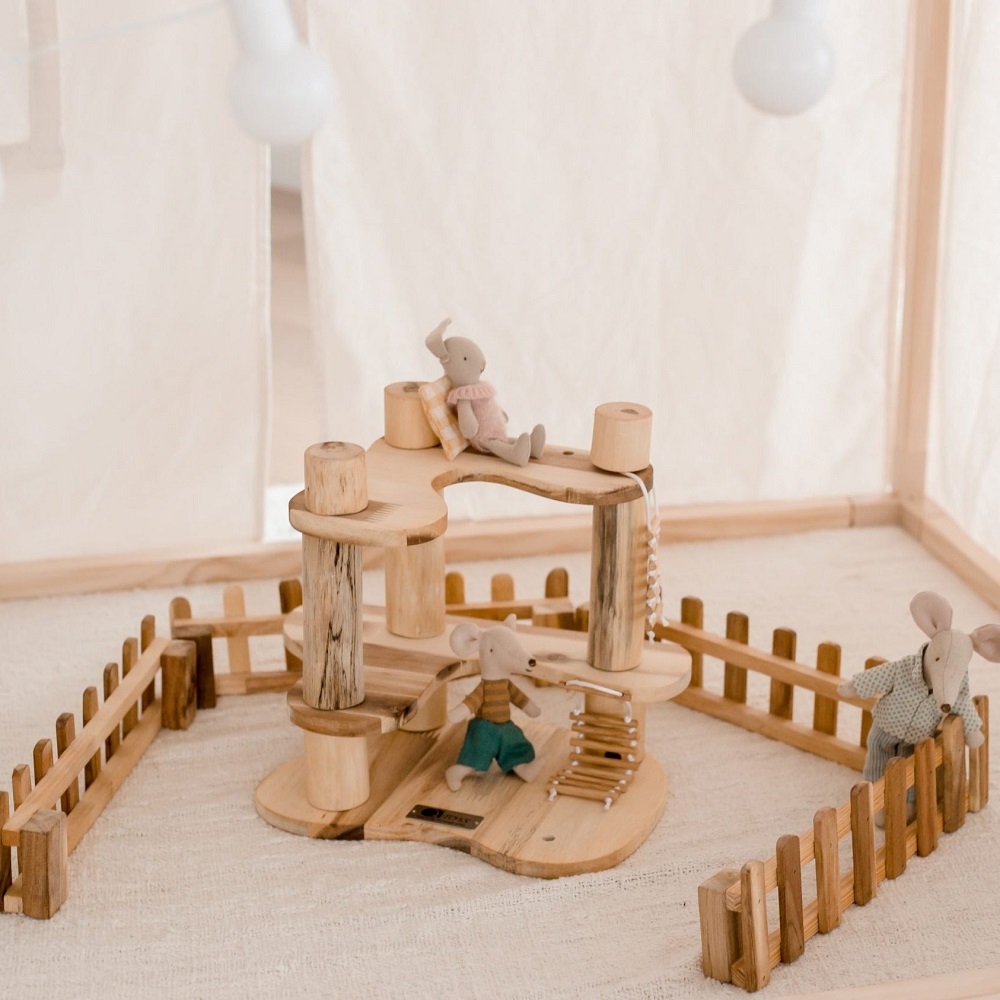
Top Sustainable Wooden Toy Brands
When choosing wooden baby toys, picking sustainable brands matters. Parents today not just buy toys; they invest in companies that value the planet. Here are top picks for sustainable wooden toy brands that are favorites among eco-conscious families.
Brands That Prioritize Eco-Friendly Practices
Sustainable wooden toy brands use materials that are safe for children and the environment. They source wood from forests that practice responsible logging. These brands often use non-toxic, water-based paints and finishes. Their toys are not only safe for children, but they also have minimal impact on the environment.
Brands with a Commitment to Quality and Safety
Quality and safety go hand-in-hand for the top wooden toy manufacturers. They make toys that withstand rough play without easily breaking. This commitment means their products are both durable and safe, with no small parts to cause choking hazards.
Brands That Support Local Economies
Many sustainable wooden toy brands are small businesses. They create jobs and support local economies. Buying from these brands helps communities thrive. It also often means that toys have less distance to travel, reducing their carbon footprint.
Brands with a Positive Social Impact
Some wooden toy brands go further, supporting social causes. They might donate a portion of profits to education or environmental initiatives. Choosing these brands lets parents contribute to the greater good with each purchase.
Commitment to Innovation and Design
Leading sustainable brands combine eco-friendliness with innovative design. They create educational toys that foster learning and development. These brands prove that sustainability does not mean compromising on quality or play value.
When selecting wooden baby toys, these brands offer sustainable, safe, and quality options. They help ensure that the joy of play today does not come at the expense of tomorrow’s world.
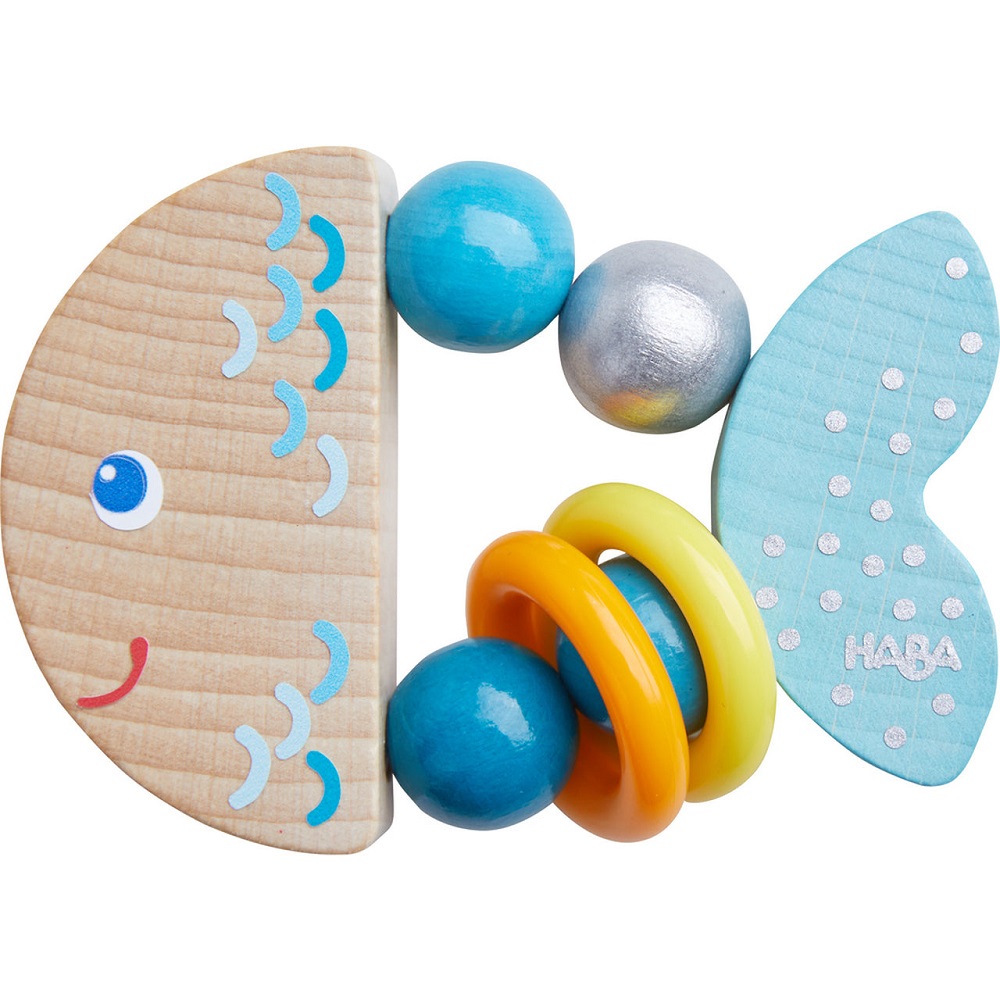
The Educational Benefits of Wooden Toys for Infants
Wooden baby toys are more than just a safe and eco-conscious choice for parents. They also provide a host of educational advantages for infants, aiding in the development of crucial skills. These benefits include:
Encouraging Sensory Development
Wooden toys have varied textures, which stimulate an infant’s sense of touch. Their natural surfaces encourage babies to explore different sensory experiences. Smooth, polished, or even the grainy feel of wood can be fascinating for little fingers.
Promoting Fine Motor Skills
Grasping, stacking, and fitting wooden toys helps improve an infant’s fine motor skills. These activities require coordination and dexterity, which are vital as they grow and learn to manipulate objects.
Fostering Creativity and Imagination
With simpler designs, wooden toys engage an infant’s imagination. They can inspire creative play without predetermined outcomes, unlike electronic toys that dictate how to play.
Enhancing Problem-Solving Skills
Many wooden toys involve sorting, matching, and assembling. These play patterns encourage infants to solve problems and can boost their cognitive development.
Supporting Early Learning Concepts
Wooden blocks and puzzles introduce infants to shapes, colors, and letters. Such toys can lay a foundation for learning basic concepts in a fun and tactile way.
Encouraging Interaction and Cooperative Play
As infants grow, wooden toys can promote social interaction. Sharing, taking turns, and playing collectively with wooden toys teaches cooperation and social skills early on.
By incorporating wooden baby toys into their playtime, parents can support their infant’s learning and developmental journey. These toys are not just a nostalgic nod to the past; they are a wise investment in a child’s future learning abilities.
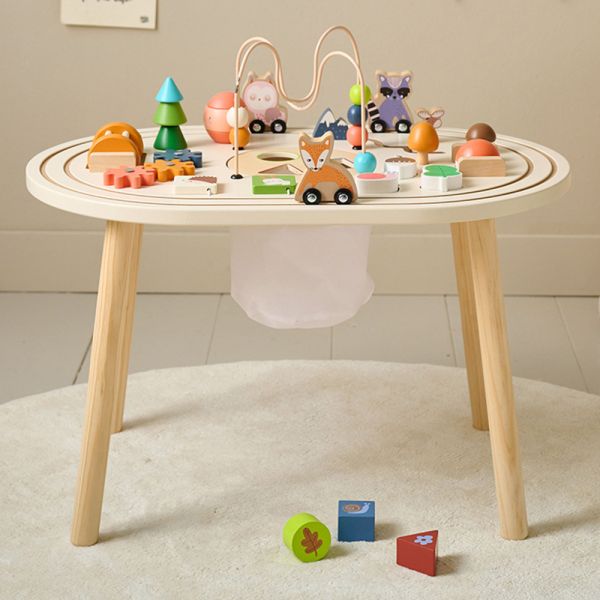
How to Care for and Maintain Wooden Baby Toys
Caring for wooden baby toys is straightforward, ensuring they last for many years. Here’s a simple guide to maintain these precious items.
Regular Cleaning Is Essential
Gently wipe wooden toys with a damp cloth. Avoid soaking them to prevent warping. For a deeper clean, use a mild soap. After cleaning, let them air dry.
Use Natural Oils for Preservation
Occasionally, apply a natural oil like coconut or beeswax. This protects the wood and keeps it from drying out. Rub the oil in with a soft cloth.
Inspect Toys for Safety
Check regularly for any splinters or wear. Sand down rough spots carefully. If a toy is damaged, it’s best to fix it promptly to avoid hazards.
Store Properly to Avoid Damage
Keep wooden toys in a cool, dry place. High humidity or direct sunlight can cause issues. Proper storage helps maintain their quality and safety.
Encourage Responsible Play
Teach children to play with care. This minimizes damage and extends the toy’s life. Respect for toys also instills a good sense of responsibility.
Avoid Chemical Cleaners
Stay clear of harsh chemicals. They can harm the wood and pose health risks. Stick to natural cleaning methods for the best care.
Taking these steps will keep wooden baby toys in optimal condition. With proper care, these toys can be cherished and passed down through generations.
A Comparison: Wooden Toys vs. Plastic Toys
When it comes to baby toys, the wooden versus plastic debate is significant. Both materials have their pros and cons, which can influence a parent’s decision on what to introduce to their child.
The Composition and Feel
Wooden baby toys, as the name implies, are crafted from wood, offering a natural, robust feel. Plastic toys, on the other hand, are synthetic and can vary widely in quality and texture.
Durability and Lifespan
Wooden toys are known for their long-lasting nature, often surviving to become heirlooms. Plastic toys, while sometimes durable, often have a shorter lifespan and can break more easily, potentially creating safety hazards.
Safety and Chemical Considerations
Safety is a critical factor in the comparison. Wooden toys generally contain no harmful chemicals or toxins, while plastics may include BPA or phthalates, raising health concerns.
Environmental Impact
From an eco-perspective, wooden toys are biodegradable and have a lower carbon footprint. Plastic toys contribute to landfill waste and are not as environmentally friendly due to their non-biodegradable nature.
Cost and Availability
Plastic toys tend to be more affordable and widely available. Wooden toys might come with a higher price tag, but many parents find their value in safety and sustainability to be worth the investment.
Educational Value
Often, wooden toys are simpler and encourage more imaginative play, which is crucial for development. Plastic toys often come with electronic parts that can limit the scope of play.
Making a choice between wooden and plastic baby toys ultimately depends on what values matter most to you: durability, safety, environmental impact, cost, or educational benefit. Wooden baby toys stand out as a wholesome option, aligned with a movement towards sustainability and natural living.
Gift Ideas: Best Wooden Toys for Various Ages
Finding the perfect gift for little ones can be a challenge, but wooden baby toys offer timeless charm. These toys come in various shapes and sizes, suitable for different age groups. Here is a selection of the best wooden toys that can make wonderful gifts for babies and toddlers of various ages.
Infants (0-12 months)
- Teething Rings: Crafted from smooth wood, these rings soothe gums without chemicals.
- Rattles: Gentle sounds and easy-to-hold shapes make wooden rattles ideal for sensory development.
- High-Contrast Mobiles: Hanging wooden mobiles with high-contrast colors captivate and visually stimulate.
Toddlers (1-3 years)
- Stacking Blocks: Building and knocking them down, toddlers learn about balance and coordination.
- Pull Toys: Animals on wheels encourage walking and exploration.
- Shape Sorters: Matching wooden shapes enhances problem-solving and motor skills.
Preschoolers (3-5 years)
- Puzzles: Wooden puzzles with handles boost cognitive skills through shape recognition.
- Play Sets: Miniature farms or kitchens foster creativity and role-playing.
- Balance Boards: These strengthen core muscles while promoting balance and imagination in play.
Older Children (5+ years)
- Craft Sets: Older children can paint or assemble their wooden toys, encouraging creativity.
- Strategy Games: Wooden board games like chess teach critical thinking and patience.
- Educational Models: Solar system models or anatomy puzzles made of wood can be both fun and educational.
These gift ideas align with the desire for safe, sustainable, and educational play. Wooden baby toys are more than just gifts; they’re investments in a child’s development and our planet’s future. When selecting a toy, consider the child’s age, interests, and the toy’s potential for longevity and learning.
